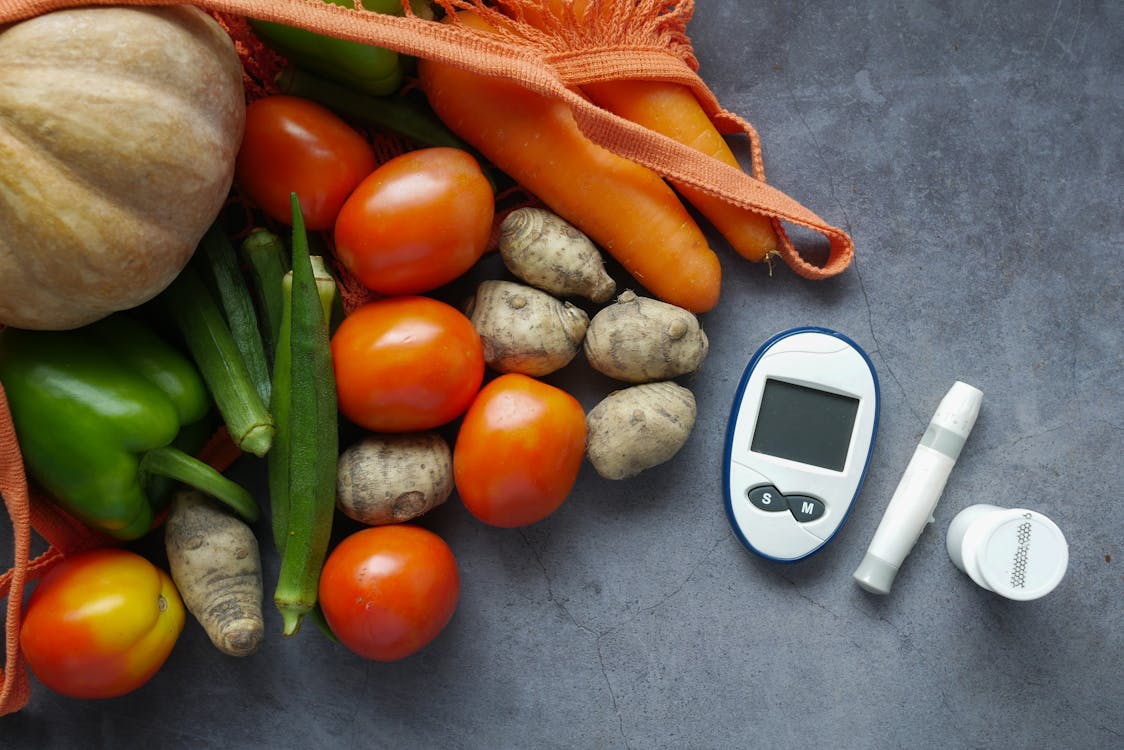Introduction
Type 2 diabetes is a chronic condition that affects how the body processes blood sugar (glucose). While medication and exercise play a role in managing diabetes, diet is one of the most critical factors. Eating the right foods can help stabilize blood sugar, reduce insulin resistance, and improve overall health.
This article provides a comprehensive guide to the best foods for Type 2 diabetics, helping you make healthier choices for better diabetes management.
1. Non-Starchy Vegetables – Nutrient-Dense and Low-Carb
Vegetables are rich in fiber, vitamins, and antioxidants while being naturally low in carbohydrates. They help slow digestion and prevent blood sugar spikes.

• Spinach, kale, and Swiss chard
• Broccoli, cauliflower, and Brussels sprouts
• Bell peppers, cucumbers, and zucchini
• Carrots, asparagus, and mushrooms
These vegetables can be eaten raw, cooked, or blended into soups and salads for a healthy meal option.
2. High-Fiber Foods – Slows Down Sugar Absorption
Fiber plays a crucial role in controlling blood sugar levels by slowing digestion and preventing rapid glucose spikes. It also promotes gut health and keeps you feeling full for longer.

• Whole grains (brown rice, quinoa, oats, whole wheat)
• Beans, lentils, and chickpeas
• Chia seeds, flaxseeds, and pumpkin seeds
• Nuts like almonds, walnuts, and pistachios
Including fiber-rich foods in daily meals can reduce insulin resistance and help with weight management.
3. Lean Proteins – Keeps You Full Without Spiking Blood Sugar
Protein helps build and repair tissues while keeping you satisfied, reducing the temptation to snack on unhealthy foods.

• Skinless poultry (chicken, turkey)
• Fatty fish (salmon, tuna, mackerel) – rich in omega-3s
• Eggs
• Low-fat dairy (Greek yogurt, cottage cheese)
• Plant-based proteins (tofu, tempeh, lentils)
Eating protein with every meal helps maintain steady blood sugar levels throughout the day.
4. Healthy Fats – Supports Heart Health
Healthy fats are essential for heart and brain function. They also help keep blood sugar stable and reduce inflammation.

• Avocados
• Olive oil and coconut oil
• Nuts and seeds
• Fatty fish like salmon and sardines
Avoid trans fats found in fried and processed foods, as they can worsen insulin resistance and heart disease risk.
5. Low-Glycemic Fruits – Natural Sweetness Without Sugar Spikes
Fruits contain natural sugars, but some have a low glycemic index (GI) and are safe in moderation.

• Berries (strawberries, blueberries, raspberries)
• Apples and pears (with skin)
• Peaches, plums, and cherries
• Oranges and grapefruit
Tip: Avoid fruit juices and dried fruits, as they contain concentrated sugars that can quickly raise blood sugar levels.
6. Dairy Products – Rich in Protein and Calcium
Dairy provides essential nutrients like calcium and vitamin D, but it’s important to choose low-fat and unsweetened options.

• Greek yogurt (unsweetened)
• Skim milk or almond milk
• Cottage cheese
Avoid flavored yogurts and full-fat dairy as they may contain added sugars.
7. Whole Grains – A Better Alternative to Refined Carbs
Refined carbs like white bread and pasta cause blood sugar spikes. Instead, choose whole grains that provide fiber and nutrients.

• Whole wheat bread and pasta
• Brown rice and quinoa
• Oats and barley
Whole grains slow down digestion, leading to better blood sugar control and long-lasting energy.
Foods to Avoid for Type 2 Diabetes




These foods can cause rapid spikes in blood sugar levels and worsen insulin resistance.
Meal Planning Tips for Type 2 Diabetics
1. Balance Your Plate: Fill half with vegetables, one-quarter with protein, and one-quarter with whole grains.
2. Watch Portions: Even healthy foods can cause blood sugar spikes if eaten in large quantities.
3. Stay Hydrated: Water is the best option; avoid sugary drinks.
4. Monitor Blood Sugar: Track levels before and after meals to understand how foods affect your body.
5. Plan Ahead: Meal prep helps avoid unhealthy choices.
Final Thoughts
Managing Type 2 diabetes is about making smart food choices. A diet rich in fiber, lean protein, healthy fats, and whole grains can significantly improve blood sugar levels and overall health. Avoiding sugary, processed, and refined foods is equally important.
By following a balanced diet, staying active, and monitoring blood sugar levels, Type 2 diabetics can lead a healthy and fulfilling life while preventing complications.
References:
1. American Diabetes Association (ADA) – Nutritional guidelines for Type 2 diabetics
2. Centers for Disease Control and Prevention (CDC) – Research on diabetes-friendly diets
3. Mayo Clinic – Dietary recommendations for diabetes management
4. Harvard T.H. Chan School of Public Health – Impact of whole foods on diabetes
5. World Health Organization (WHO) – Global guidelines on nutrition for diabetes prevention
Also Read About :Know About Best Foods for Type 1 Diabetes Patient
Visit Us At : https://g.co/kgs/rTqAjgt





